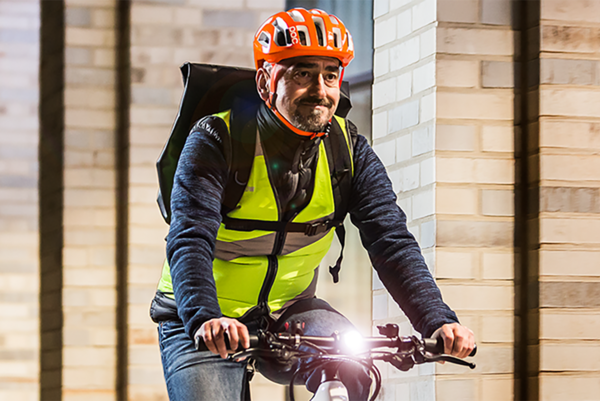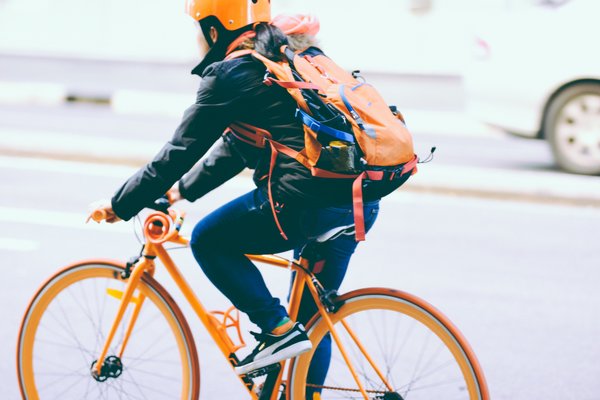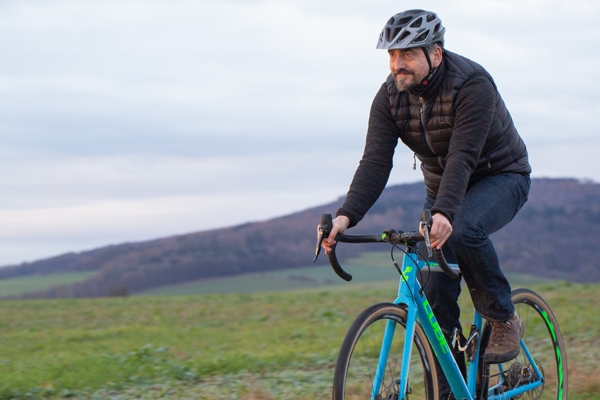
World Bike Day: Celebrate your bike with our care tips
Share blog article:
June 3rd is World Bicycle Day! The perfect occasion to pamper your bike with an extra portion of care. With our tips, you can get your bike ready for the next spring tour with little effort.
UN Action Day in the name of environmentally and health-conscious mobility
As an official UN day of action since 2018, World Bicycle Day aims to draw global attention to the benefits of the bicycle as a reliable, affordable and sustainable means of transport. At European level, the Day of the Bicycle has even existed since 1998.
Our tip: take care of your bike on World Bicycle Day
Every year on World Bicycle Day, cycling enthusiasts celebrate the bicycle and its potential for the transport revolution with activities such as tours and rallies. Whether it's your faithful everyday companion or your favorite vehicle for sporty tours in your free time - we think your bike deserves a little extra attention on its special day and explain how to get your bike in shape for the next tour.
But first ... clean it
Let's start with a thorough clean. Essentially, all you need is a bucket of warm water and a sponge. If your bike is very dirty, you can first rinse off coarse dirt with a garden hose. Some bike fans use a high-pressure cleaner for this - however, there is some debate as to whether this is harmful to the bearings or not and it is not necessary in any case. After the rough cleaning, you can clean parts such as chainrings, brakes, shifters, derailleurs etc. with a soft cloth or a fine (tooth) brush. Warm water (possibly with a little washing-up liquid) is usually sufficient for this too - and above all more environmentally friendly than chemical bike cleaners. If you want to use a bike cleaner for stubborn dirt, you should make sure that it is 100% biodegradable to minimize the impact on the environment. Finally, don't forget to dry off to avoid water marks and prevent rust.
Cleaning and oiling the bike chain
Before you oil your bike's chain, it is important to clean it thoroughly. Chain cleaners that remove dirt make this job easier, but are not a must. A simple cloth or a chain cleaning device is a more environmentally friendly way to do it mechanically. The advantage: an integrated magnet attracts washed-off metal particles and prevents them from getting into the chain. Once the chain is clean and dry, drip chain oil onto the individual links and run the chain through a few times so that everything is well distributed. Then give it a few minutes to let the oil work in before removing any excess oil with a cloth.
Greasing bicycle dampers
The following also applies to the shocks in the suspension forks of mountain bikes, trekking bikes and gravel bikes: first clean, then maintain. First remove dust and dirt with a soft cloth and then grease with a suitable lubricant so that the seals remain supple and do not become porous. This can be done with special sprays, for example, which are easy to apply.
The right lubricant for bike chains, shocks & co.
Not all bicycle grease is the same. That's why it doesn't make sense to use one lubricant for all mechanical parts. For example, highly volatile greases are particularly suitable for the shocks of suspension forks, while the chains of mountain bikes can use an oil with strong adhesion so that water and dirt do not have it so easy. Road bike chains, on the other hand, can benefit from a dry, less sticky oil that does not attract as much dust.
Check your bike brakes
Whether rim or disc brakes - you can only ride your bike safely with two perfectly functioning brakes. That's why you should not only check them on World Bicycle Day, but June 3rd is a good opportunity in any case. Important when checking: Do the brake pads still have enough tread or do they need to be replaced? Are the brake cables working smoothly? Is everything adjusted so that the brakes respond quickly and effectively?
Checking the air pressure of bicycle tires
Tire pressure affects rolling resistance and traction when riding and is therefore important for both riding comfort and your safety on the bike. Too low a pressure makes it difficult for you due to increased rolling resistance and, in extreme cases, can damage the rims. If the tire pressure is too high, you will be shaken more than necessary because bumps are not cushioned enough and the risk of the tire bursting increases. The correct pressure depends on various factors such as the type of bike, the tire size and the surface you are riding on - the manufacturers provide a guide value on the side of the tires to help you. The best way to check and correct the pressure is to use a floor pump with a pressure gauge.
Not in the mood for bike care?
Do you want to do something good for your bike but don't feel like handling oil and an air pump yourself? Then arrange an inspection appointment at your trusted bike dealer. If your next bike is a company bike, you can even conveniently book the inspection service at the same time and ensure that your bike remains roadworthy and in good working order.
Sounds good? With our leasing calculator, you can easily calculate how much you can save when leasing a company bike.



